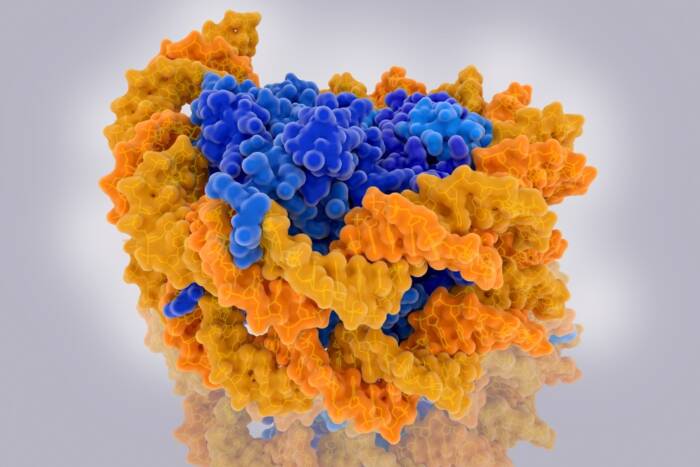Hironori Funabiki promoted to associate professor
by TALLEY HENNING BROWN
Hironori Funabiki, head of the Laboratory of Chromosome and Cell Biology, has been promoted from assistant professor to associate professor. Dr. Funabiki, who came to the United States from Japan in 1996 and to Rockefeller University in 2002, studies how chromosomes segregate evenly during cell division. Following approval by the Rockefeller Board of Trustees in November, the promotion was officially announced December 1.
Dr. Funabiki has been studying the details of cell division since graduate school. He earned his undergraduate degree in chemistry and his doctorate in cell biology from Kyoto University, working there with Mitsuhiro Yanagida. In 1996 he joined the laboratory of Andrew Murray for postdoctoral research that began at the University of California, San Francisco, and later moved to Harvard University. Dr. Funabiki’s main research question over the last dozen years concerns a biological function that is essential for the development of all life: When a cell prepares to divide into two daughter cells, how are the chromosomes equally divided so that each new cell ends up with exactly the same set of chromosomes? The cascade of events known as mitosis is guided by a signaling pathway that scientists have yet to fully characterize, and because dysfunctions in the mitotic process may cause cell death or an abnormal number of chromosomes that can lead to cancer or birth defects, the question carries weighty implications.
“The common metaphor is that the chromosome is like a passenger being carried to its proper place. But I believe it is not a passive passenger, like someone on a subway, but an active passenger, like someone in a taxi giving an address and perhaps even directions to a driver,” says Dr. Funabiki. “We’re trying to listen to that conversation between the passenger and the driver.”
Dr. Funabiki began his independent career at Rockefeller in 2002, and since then has made some key discoveries to help translate that conversation. Chromosome segregation depends on a precise concert of steps, including the formation of the mitotic spindle, which guides the direction of chromosome movement. Dr. Funabiki discovered that the spindle forms when an enzyme called Aurora B is activated by chromosomes and that this mechanism, together with others, facilitates the construction of the structural pathways on which chromosomes segregate.
Dr. Funabiki’s lab has driven collaborative investigations at Rockefeller as well, with C. David Allis, head of the Laboratory of Chromatin Biology and Epigenetics, and with Brian T. Chait, head of the Laboratory of Mass Spectrometry and Gaseous Ion Chemistry.
“I am extremely fortunate to be at Rockefeller University. The community here has been tremendously supportive, not only by encouraging my research but by collaborating with me on things I might not otherwise have had the opportunity to do,” says Dr. Funabiki. “I look forward to all that is just beginning.”


